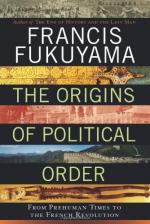
|
| Name: _________________________ | Period: ___________________ |
This test consists of 15 multiple choice questions and 5 short answer questions.
Multiple Choice Questions
1. When did Emperor Wu rule?
(a) 141 to 87 B.C.
(b) 161 to 67 B.C.
(c) 141 to 77 B.C.
(d) 131 to 87 B.C.
2. What was Ohn Hajna's occupation?
(a) Sociologist.
(b) Economist.
(c) Demographer.
(d) Historian.
3. When did Muhammad and his followers move to Medina?
(a) 632.
(b) 425.
(c) 592.
(d) 622.
4. How long did the sultanate last in India?
(a) 350 years.
(b) 320 years.
(c) 310 years.
(d) 340 years.
5. What was S. E. Finer's occupation?
(a) Economist.
(b) Anthropologist.
(c) Sociologist.
(d) Historian.
6. When did Maine spend time in India?
(a) 1862 to 1869.
(b) 1862 to 1872.
(c) 1862 to 1868.
(d) 1862 to 1875.
7. When did the Zhou dynasty split?
(a) 770 B.C.
(b) 570 B.C.
(c) 870 B.C.
(d) 970 B.C.
8. What term designates a clan, community or group where people can only have a limited set of occupation?
(a) Yumas.
(b) Maros.
(c) Jatis.
(d) Katus.
9. What was the Bahri regiment named after?
(a) A god.
(b) A king.
(c) A lake.
(d) A fortress.
10. How many Kalinga died during the Kalinga campaign?
(a) 250,000.
(b) 150,000.
(c) 50,000.
(d) 350,000.
11. What is a socially and biologically grounded reality for human being?
(a) Despostism.
(b) Liberalism.
(c) Nepotism.
(d) Equality.
12. When did Sultan Barquq come to power?
(a) 1390.
(b) 1345.
(c) 1325.
(d) 1356.
13. When did the first chiefdom and states start to appear in India according to Chapter 10?
(a) Second millenium B.C.
(b) Fifth millenium B.C.
(c) Third millenium B.C.
(d) First millenium B.C.
14. When did the Orange Revolution happen?
(a) 2004.
(b) 2005.
(c) 2006.
(d) 2003.
15. How may countries were considered free by the Freedom House in 1973, according to Chapter 1?
(a) 45.
(b) 41.
(c) 46.
(d) 43.
Short Answer Questions
1. Where was the Chimpanzee Puist kept?
2. Why were the Xiongnu, Huns, and Mongols such potent military powers?
3. When did the Berlin Wall fall?
4. When was the Wei kingdom founded?
5. How many enemy soldiers did the state of Qin kill during the period from 356 to 236 B.C?
|
This section contains 289 words (approx. 1 page at 300 words per page) |

|




